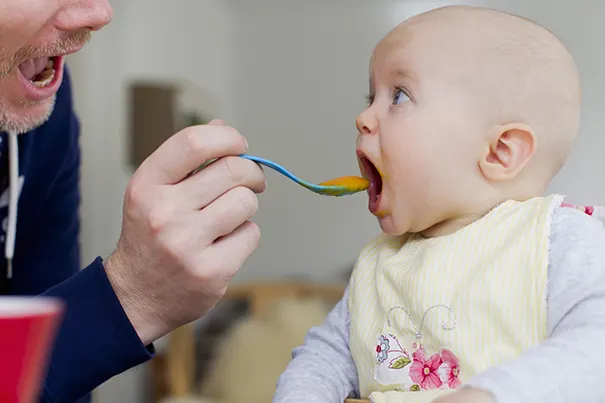Weaning: starting your baby on solid foods
For months your baby has thrived with just breast milk or formula on the menu. Now that he's getting bigger, he seems to want more out of lunch than mere milk. When is the best time to introduce solid foods to your infant? Which foods should come first?
Solid signals
The newest recommendations are to introduce solids when your baby is about four to six months old. He may be ready for solids when he:
Has doubled his birth weight and weighs at least 6.3 kg (13 pounds).
Makes mouthing movements as he watches other people eat.
Is still hungry after eating a good amount of breast milk or formula.
Doesn't push his tongue out at a spoon when you try to feed him.
Pulls in his lower lip for food instead of sticking it out.
Holds his head up on his own.
Sits upright easily with some support.
Follows food with his eyes.
Closes his lips over food.
Reactions to food
Introduce new foods one at a time to see whether your baby has an allergic reaction or is sensitive to a particular food. Food reactions usually show up as rashes on the face or in the diaper area, by throwing up or by loose stools. Babies don't need the sugar or the salt that adults eat, so don't add them to your child's food, even though it may taste bland to you.
Feeding basics
Always start with solids on a spoon. Never put solids in a bottle.
Hold your baby in your lap when you start off. Be sure his head and neck are upright.
Talk quietly. He needs to concentrate when he's starting.
Hold the filled spoon in front of your baby and wait until he opens up. Put a little food on his lip to tempt him if his mouth stays closed.
Wait for him to pay attention to the spoon before you put it in his mouth.
Stop when he shuts his mouth, turns away or arches.
Let him touch his food. It's his way of finding out about it.
Watch your own facial expression. If you frown as you present puréed peas, your baby will wonder why he's getting that green stuff.
Breast milk and formula are still important, but give your baby solids before them to encourage him to accept new foods.

